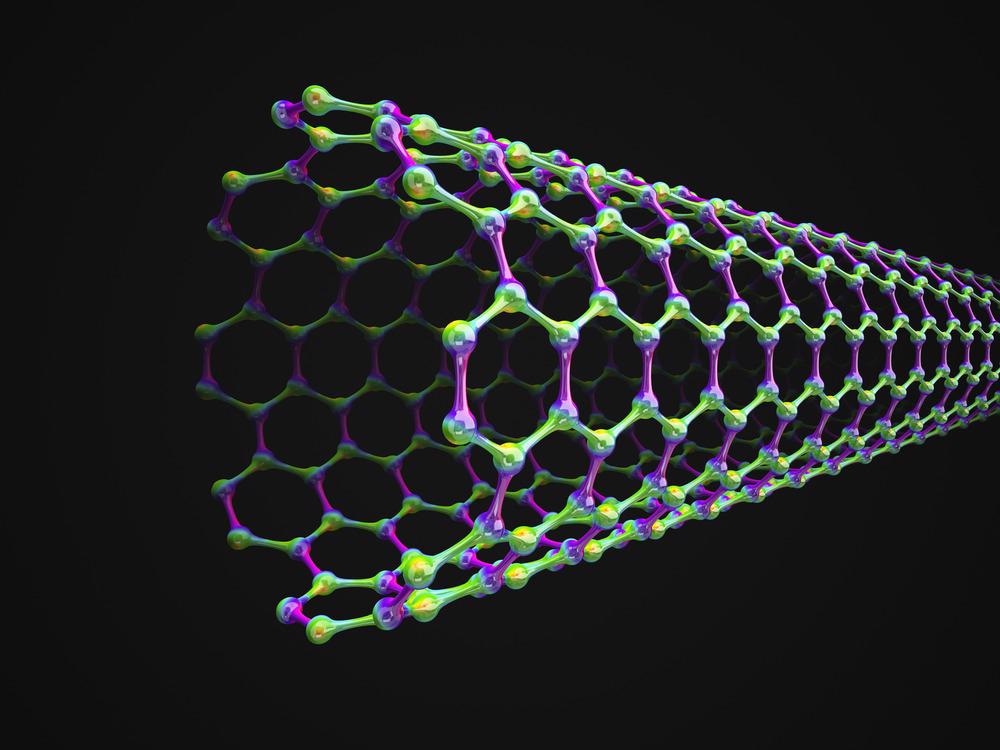Carbon nanotube (CNT) thin films' structural, electronic, and thermal properties enable accurate measurements under different environmental conditions. Because of these characteristics, they are attractive materials for sensing applications in automobiles, jet engines, medical devices, and commercial control devices.

Study: Investigations of the influence of geometrical parameters of carbon nanotube material for sensor and MEMS applications. Image Credit: Orange Deer studio/Shutterstock.com
A recent study published in the journal Materials Today: Proceedings examines the effect of geometrical features on the sensitivity and precision of the CNT-based sensors.
Thin Films: The Future of Sensing Materials
Thin films are emerging as a potential material for meeting the urgent demands in many engineering sectors for non-invasive stress, strain, and loading vibration monitoring in increased thermal, moisture, and vibrational settings. Aircraft, automobile, engine, materials manufacturing, and medical equipment industries are examples of such settings.
Thin films offer various advantages over thick films, including superior spatial precision, rapid reaction, better absolute ratio limits, and little interference with the electronics being examined. Thin-film electronics are also more chemically stable than thick-film electronics, with reduced noise and greater thermal tolerance.
Thin films have a lower tendency to show creep and have excellent durability because they do not require a binder. Because of the higher surface-to-volume percentage, the heat created by self-induced heating may be quickly dispersed by sensor film.=
Carbon Nanotube (CNT) Thin Films for Sensing Applications
Carbon nanotube (CNT) thin films are gaining popularity nowadays due to their remarkable capabilities. Their structural and electromagnetic properties, in particular, make them ideal resources for sophisticated manufacturing nano-composites.
These characteristics imply that CNT films might be used as conductive or semiconducting layers in various electrical, photonic, and sensor systems. Film-forming methods and experimental work that discloses their collective characteristics are important from both basic and practical perspectives to understand how to produce these films and construct devices employing them.
Why are Simulations of CNT Thin Film Sensors Important?
Assessing the responsiveness of the CNT sensing element in real-time is a laborious task since the manufacture of numerous sensor prototypes and calibration is very tedious and expensive. A primary problem is achieving the appropriate material composition, cleanliness, and uniformity of the thin film sensing element.
The surrounding working ambient factors always have an impact on measurements. Therefore, modifying operational ambient conditions that impact sensor performance is a difficult undertaking. To tackle these issues inexpensively, the simulations of CNT sensors are essential.
Influence of Geometrical Parameters on CNT-based Sensors
Much research has already been conducted on modeling gas detectors, thin-film temperature sensor systems, strain gauges, and pressure sensors. However, it was discovered that less effort was put into simulating strain sensor responsiveness when geometrical factors such as length, breadth, and thickness of carbon nanotube composites varied.
To explore the impact of geometrical factors, the researchers simulated I-V properties and resistivity for CNT thin-film sensing elements in this study. The research used the SILVACO-ATLAS TCAD simulation tool to discover the ideal combinations of geometric input variables suited for developing carbon nanotube strain sensors to achieve significant strain sensitivity.
By varying different parameters such as length (L), width (W), and thickness (T) of the CNT-based sensor, the researchers were able to generate 27 models for simulations. To acquire I-V operating characteristics, each device construction was subjected to a voltage sweep from 0 to 5 V. The resistance shift was determined using the mathematical framework for the obtained 27 models and their simulation data.
Key Developments of the Study
The researchers concluded from their simulation work that the cathode current is directly proportionate to the thickness and width of the substance and inversely related to the length of the material. At the same time, the shift in resistance is directly proportionate to the length of the substance and inversely related to the thickness and width of the substance.
After testing 27 models, the design with the configuration of length between conductors of 30 m, a width of 10 m, and a medium thickness of 1 m produced the best cathode current results and the largest value of resistance change.
It is anticipated that this study will pave the way for the fabrication and utilization of optimized CNT thin-film sensors in various industries such as automobile, aviation, and medicine. Furthermore, the simulation strategy used in this study will work as a benchmark for future research.
Reference
Sachidananda, T. et al. (2022). Investigations of the influence of geometrical parameters of carbon nanotube material for sensor and MEMS applications. Materials Today: Proceedings. Available at: https://www.sciencedirect.com/science/article/pii/S2214785322033946?via%3Dihub
Disclaimer: The views expressed here are those of the author expressed in their private capacity and do not necessarily represent the views of AZoM.com Limited T/A AZoNetwork the owner and operator of this website. This disclaimer forms part of the Terms and conditions of use of this website.